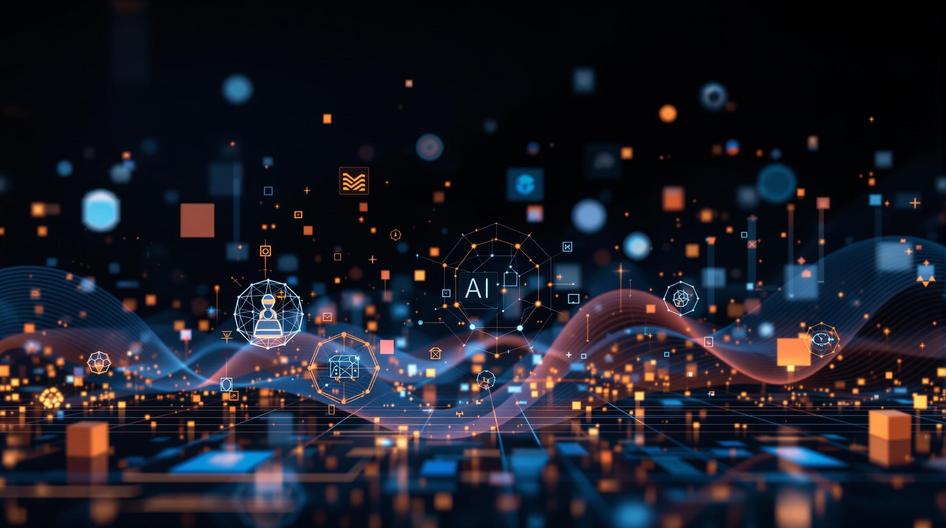
Building the Next Digital Frontier: How Smart Data, AI Agents, and Wearable Intelligence are Redefining Tech
Ever wonder what separates the tech companies that actually deliver on their AI promises from those that just talk a big game? This year’s been a masterclass in answering that question. While everyone’s been buzzing about artificial intelligence transforming industries, the real story isn’t just about having smarter algorithms. It’s about something much more fundamental: turning messy, real-world data into systems that actually work.
From cancer treatment centers to factory floors and even military operations, we’re seeing a new generation of tech that’s finally cracking the code on intelligent automation. But here’s the thing that most coverage misses: none of this happens without solving the data problem first.
The Unstructured Data Reality Check
Let’s be honest about something most companies don’t want to admit. The vast majority of business data, whether it’s medical records, engineering specs, or customer communications, is an absolute mess. It’s unstructured, context-poor, and often contradictory. Think about your own experience with corporate databases or even personal file management. Now imagine trying to feed that chaos into an AI system and expecting magic to happen.
A recent Business Insider analysis put it bluntly: companies that don’t fix their data quality issues will watch their AI projects fail, regardless of how sophisticated their models are. This isn’t just theoretical. We’re talking about real money and real competitive advantages getting flushed away because organizations skipped the unglamorous work of data cleaning.
The solution isn’t sexy, but it’s essential. Advanced ETL tools and validation processes are becoming the unsung heroes of successful AI deployments. These systems automatically strip noise from data streams and add the context that machine learning models desperately need. Without this foundation, even the most advanced AI is basically trying to read tea leaves.
Medicine Gets Personal with Specialist AI
Want to see what happens when data quality meets domain expertise? Look at what’s happening in oncology right now. New research published in Nature shows how lightweight language models specifically trained for cancer care are revolutionizing how doctors process clinical information.
These aren’t your general-purpose chatbots. We’re talking about AI systems that understand the nuanced language of oncology, can work across multiple languages, and actually help doctors make better treatment decisions. The secret sauce? A combination of instruction tuning, retrieval-augmented generation, and knowledge graphs that can navigate complex medical terminology.
This approach mirrors what we’re seeing in health tech innovation more broadly. Instead of trying to build one AI to rule them all, smart developers are creating specialized tools that excel in specific domains. It’s a strategy that’s starting to pay off in ways that matter to actual patients.
Manufacturing’s Knowledge Problem Gets an AI Solution
If you think data problems are bad in healthcare, try working in manufacturing. Engineers spend countless hours hunting for specifications, maintenance records, and design documents that should be at their fingertips. It’s not just inefficient, it’s actively stifling innovation.
Industrial Equipment News reports that knowledge agents are finally closing this gap. These AI-driven systems don’t just search databases, they understand context and can synthesize information from multiple sources in real-time.
What’s interesting is how these companies are rolling out agentic AI. They’re not trying to solve everything at once. Instead, they’re starting with focused use cases like equipment maintenance or design searches, then expanding as the systems prove their worth. It’s a practical approach that could teach other industries a lot about sustainable AI adoption.

When Silicon Valley Meets the Battlefield
Here’s a partnership that probably surprised a lot of people: Anduril, the defense tech company, teaming up with Meta to create military-grade AR wearables. The result is EagleEye, a system that puts real-time intelligence directly in a soldier’s field of view.
This collaboration isn’t just about cool gadgets. It represents a fundamental shift in how we think about human-computer interaction. When data becomes truly contextual and immediately accessible, it changes everything about how people work and make decisions.
The partnership also includes Qualcomm, OSI, and Gentex, showing how complex modern tech development has become. No single company, not even the giants, can build everything in-house anymore. This trend toward collaborative innovation is reshaping augmented reality development and could signal similar changes in other emerging tech sectors.
Learning from Biology’s Original Intelligence
While engineers are building increasingly sophisticated AI systems, neuroscientists are still uncovering how biological intelligence actually works. Recent research mapping gene expression in mouse brains during memory formation offers fascinating insights for AI developers.
The study tracked how memories are encoded and retrieved at the molecular level, revealing patterns that could inform next-generation AI architectures. It’s a reminder that despite all our progress, biology still has lessons to teach us about building truly adaptive, generalizable intelligence.
This research matters because it addresses one of AI’s biggest current limitations: the ability to learn and adapt in context-sensitive ways. If we can better understand how biological systems handle information encoding and retrieval, we might finally crack the code on AI that’s as flexible as human intelligence.
What This Means for Developers and Investors
So where does this leave the tech community? The patterns emerging from healthcare, manufacturing, defense, and neuroscience point to some clear trends that smart developers and investors should watch.
First, data infrastructure isn’t glamorous, but it’s becoming the foundation that separates successful AI deployments from expensive failures. Companies that invest in robust ETL processes and data validation will have massive advantages over those that don’t.
Second, specialized AI is outperforming general-purpose models in real-world applications. This creates opportunities for developers who understand specific domains and can build targeted solutions.
Third, the hardware-software integration we’re seeing in projects like EagleEye suggests that the next wave of innovation will come from teams that can think across traditional boundaries. This has implications for everything from Web3 infrastructure to consumer electronics.
The convergence of smart data, autonomous agents, and contextual hardware is creating possibilities we’re only beginning to explore. For developers, the message is clear: focus on solving real problems with clean data and specialized tools. For investors, the winners will be companies that can execute on this unglamorous but essential foundation work.
The digital frontier isn’t just about having the fanciest algorithms anymore. It’s about building systems that work reliably in the messy, complex real world. Those who master this challenge will define the next era of technology.
Sources
- “Towards scalable and cross-lingual specialist language models for oncology”. Nature, Oct 10, 2025.
- “Agentic AI: Closing the Knowledge Gap to Accelerate Manufacturing Innovation”. Industrial Equipment News, Oct 14, 2025.
- “AI projects won’t deliver results until you fix your data”. Business Insider, Oct 14, 2025.
- “Anduril’s AI wearables launch brings Palmer Luckey and Mark Zuckerberg’s relationship full circle”. Business Insider, Oct 13, 2025.
- “Immediate-early genes Arc and c-Fos show divergent brain-wide expression following contextual fear conditioning”. Nature, Oct 9, 2025.





























































































